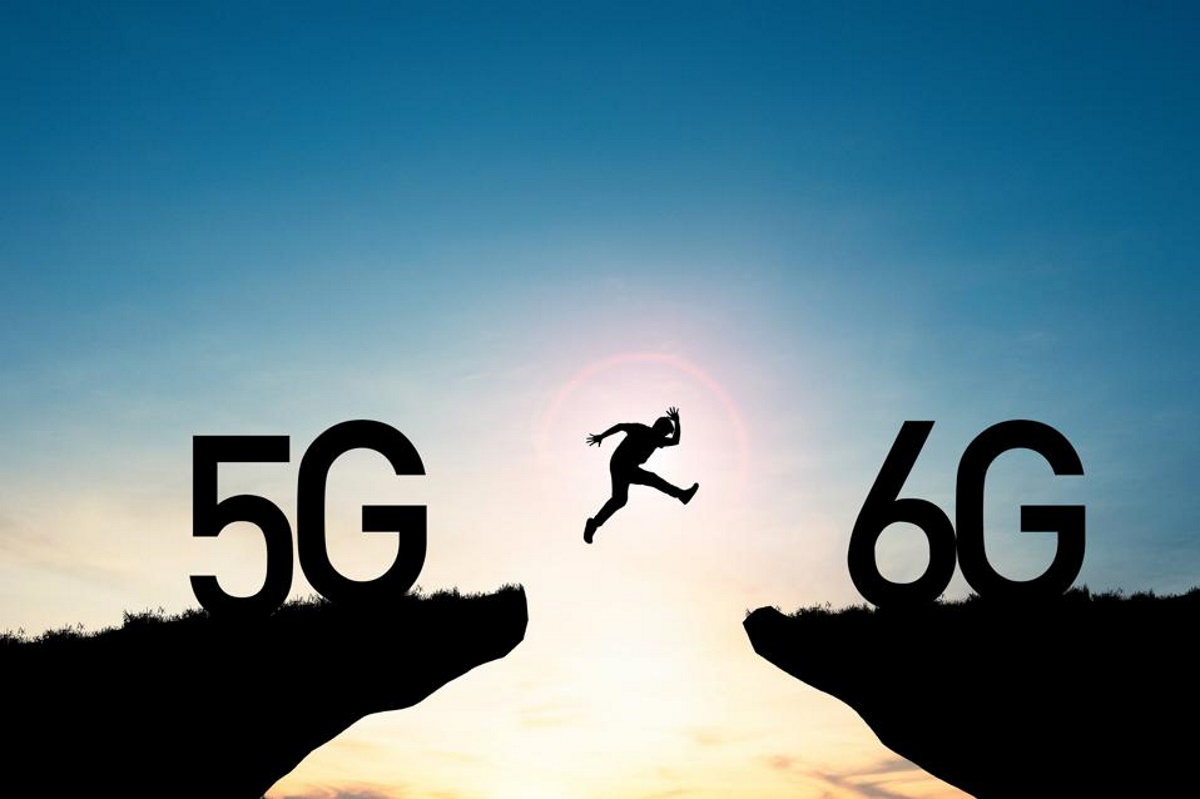On April 19th, China’s GlobalTimes reported that the Chinese had a major 6G breakthrough, where a lab made its first successful wireless transmission at a terahertz frequency level – and achieved a 100Gbps wireless data speed.
If you google “100gbps”, you’ll also get a Linkedin post from a month ago, from an Ericsson representative, who says their company achieved that.
Then, you’ll get a Keystone whitepaper titled “Going Beyond 100 Gbps to 1 Tbps”, setting the bar even higher. However, what 6G is and what it can do is still something very much up for discussion, as you’ll see in this overview.
Last August, a South China Morning Post report highlighted a study saying that terahertz radiation, aka 6G technology, can make young mice smarter – but not older ones. Some companies say they’ll allow the transmission of scent, or taste, over the web. In short, 6G is crazy – and here’s what you should know.
Plans for a 6G network – what we know so far
The US 6G plans revealed in 2023
In 2022, the One6G organization gathered top researchers and thought leaders to discuss the development of 6G and the roadmap between 5G and 6G. While few actually watched the talks, the content there would make any futurist’s ears perk up:
- The road from 5G to 6G: Challenges ahead and potential approaches from the perspective of the 6G Research and Innovation Cluster
Slawomir Stanczak, Head of the Wireless Communications and Networks department at Fraunhofer
- Robot-augmented data harvesting, sensing, and localization for 6G networks
David Gesbert, Director of EURECOM and Professor at the EURECOM Mobile Communications Laboratory
- Learning the PHY Layer in FDD Systems
Wolfgang Utschick, Professor at the Technical University of Munich
- Artificial Intelligence for the control and orchestration of mobile networks (
Albert Banchs, Professor at the Charles III University of Madrid, Deputy Director of the IMDEA Networks Institute”
You can find out more detailed information and download those presentations here.
On April 21st, 2023, CNN revealed that top US officials will hold a conference about 6G.
From the report:
“The White House wants to “take the lessons learned from 5G about the importance of early involvement and resilience,” the official said, and apply that to developing a 6G network that “optimizes performance, accessibility, and security.””
Basically, the gist of this announcement is that it’s not totally clear what 6G is going to be like yet.
The government thinks that by using things like AI, super advanced software, cloud computing, and cutting-edge chips, they can build networks that are even faster than 5G, which could enhance all sorts of fields like health, energy, transportation, water, and agriculture.
But there’s a problem with this, at least at a consumer level. By talking about 6G so much, the government is getting people really excited about a technology that doesn’t exist yet. That might make it harder for phone companies to convince people to upgrade to 5G, which is already here but hasn’t been fully adopted yet – for reasons we outline below.
What is 6G? Every detail about 6G, explained
6G (sixth-generation wireless technology) is still in the research and development stage, and it is expected to take several years before it becomes commercially available. Some estimated 6G will launch by 2023, others think it could be here much sooner.
Obviously, most people expect 6G to bring increased speed and bandwidth, with some saying data rates could reach 1 terabyte per second. This would be coupled with greater reliability, with 6G fixing the dropped connections 5G suffers from, as well as more energy efficiency. In terms of what you can do with 6G, the sky is basically the limit – and some evangelists could even claim 6G unlocks “telepathy”.
Since we’re not scary visionaries like Arthur C Clarke, we have no way of knowing what 6G will bring but we did compile what the major companies are saying about 6G – scroll on for their definitions.
Nokia’s Bell Labs about 6G
“It will profoundly transform our world and, in the process, liberate our innate human potential” – boldly claims a message from their official website enticing you to download a 6G ebook.
We did it for you, and here’s what the pioneering telecom company thinks about 6G. And yes, the Bell Labs started back in 1925 during the telephone revolution is now owned by Finnish company Nokia (just in case you have trouble keeping up with the telecom industry and who owns what.
That being said, Nokia’s 6G explanation and plans sounds just as ephemeral as most information out there. The company has a page called “6G Explained”, which tells you the following:
“With every generation of communications technology, the focus of the network changes. The 2G and 3G eras centered on human-to-human communication through voice and text. 4G heralded a fundamental shift to the massive consumption of data, while the 5G era has turned its focus on connecting the Internet of Things (IoT) and industrial automation systems.
In the 6G era, the digital, physical and human world will seamlessly fuse to trigger extrasensory experiences.”
Extrasensory experiences with 6G? Yes, that’s something other companies are also expecting from the new wireless technology.
A 6G infographic from Nokia Bell Labs
Ericsson’s 6G explanation
Ericsson says 6G will bring about sensory communication, letting online services and gadgets offer you not just sights and sounds, but also touch, taste and smell.
On their website, they explain that in 2022 we have the technology for 2D video communication. In 2030, we’ll have 3D augmented communication and even holographic communication. Beyond 2023, we could have “multisensory extensions” that will provide immersion beyond audio-visual.
Most people think Ericsson went away when smartphones made it big, since Ericsson phones were all they knew about the brand, but that’s not the case. While Ericsson has had some issues in recent years, it’s still a major player in the telecommunications industry and benefits from the ongoing rollout of 5G – and the development of future wireless technologies like 6G.
According to Ericsson, 6G will offer the following:
In the page above you can see an outline of Ericsson’s 6G ideas and, on March 21st 2023, the company also released a whitepaper on the 6G spectrum and how it will change the mobile industry. The diagram below shows what 6G will be used for, in Ericsson’s vision.
A 6G infographic from Ericsson
An editor from Light Reading put it best: ideas for 6G go from “the wacky to the prosaic”.
From an editorial called The 6G Mess Is Getting Out of Hand:
“People involved in the Gs must play Nostradamus themselves, predicting what society’s telecom needs and interests will be not in the next few months but several years from now. Increasingly, it looks like an outdated, bonkers approach to invention in such a fast-changing, technology-obsessed world. It hardly smacks of the DevOps philosophy (quick response and adaptation) that telcos say they admire.”
Plans for a 6G network
In short, every country has plans for a 6G network but inasmuch society has plans for progress, basically. Right now, the world is still struggling to adopt 5G at scale and 6G is something relegated to the area of speculation or as cutting-edge research in laboratories.
What if China gets 6G before us?
Some waited for 5G with bated breath, others feared it, and now 6G is on the way. Based on this recent report that claims China had a 6G breakthrough, many will now question what happens if China gets 6G before us. The question could have roots in sinophobia but it’s undeniable that 6G can be a game changer and, in light of recent geopolitical turmoil, it’s important to start addressing it. As an example, PM Narendra Modi said that by 2029, India is posed to be a leader in 6G.
To know what will happen if China wins the 6G “race”, all you need to do is look back at the somewhat-recent 5G debate and the discourse this technology generated.
There are multiple reasons why 5G has been controversial and why 6G is scary to some.
Many people have expressed concerns that the radiation emitted by 5G technology could be harmful to human health even though the World Health Organization (WHO) stated that there is no evidence to support these claims.
5G conspiracy theories also abound, including one that says that 5G exacerbated the COVID-19 pandemic.
One of the main issues with 5G and criticism has been national security concerns. Particularly in the United States, there have been fears that Chinese companies like Huawei could use their 5G infrastructure to spy on other countries. Indeed, for the past few years, Huawei was slowly but surely rooted out of US soil, with many countries following US’s example to limit the company’s reach.
In terms of infrastructure concerns, 5G rollout demanded significant investment in new infrastructure, and the new cell towers caused some people concerns about the impact that this could have on the environment. If 6G infrastructure has the same demands, we’ll probably see renewed discourse about this.
And lastly, but more importantly, the 5G privacy concerns is an aspect that will definitely permeate the dialogue around 6G as well.
Many fear that 5G technology enables the collection and analysis of vast amounts of data. Moreover, they hold that, as a society, we do not have the legislation or safeguards in place to make sure that data is handled safely and ethically.
What do you think?
Follow TechTheLead on Google News to get the news first.























